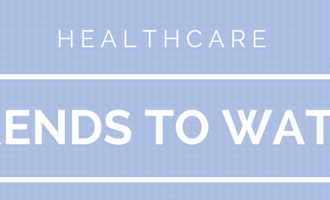 Accurate and efficient radiology billing can prove tricky, especially with so many factors influencing the final outcome. Still, maintaining a healthy revenue stream is possible for any healthcare provider so long as the practice adheres to a handful of best practices. Many of them are fairly common sense but, if ignored, can prove detrimental in the long-term.
Accurate and efficient radiology billing can prove tricky, especially with so many factors influencing the final outcome. Still, maintaining a healthy revenue stream is possible for any healthcare provider so long as the practice adheres to a handful of best practices. Many of them are fairly common sense but, if ignored, can prove detrimental in the long-term.
 Accurate and efficient radiology billing can prove tricky, especially with so many factors influencing the final outcome. Still, maintaining a healthy revenue stream is possible for any healthcare provider so long as the practice adheres to a handful of best practices. Many of them are fairly common sense but, if ignored, can prove detrimental in the long-term.
Accurate and efficient radiology billing can prove tricky, especially with so many factors influencing the final outcome. Still, maintaining a healthy revenue stream is possible for any healthcare provider so long as the practice adheres to a handful of best practices. Many of them are fairly common sense but, if ignored, can prove detrimental in the long-term.
To achieve business objectives, service providers will need to be aware of the potential obstacles and rewards of participating in medical shared risk reimbursement agreements.
1. Bring Costs under Control
Although advances in diagnostic imaging have been instrumental in improved diagnosis, a reduced number of invasive procedures, and enhanced patient care, it has also come under scrutiny as one of the primary contributors to escalating healthcare costs.
Consequently, reimbursement cuts for diagnostic imaging and the transition to a shared risk reimbursement arrangement makes controlling expenses essential for radiology practices. Staff salary and wages represent the biggest expense categories, followed by facility leasing costs, supplies and administrative expense.
Some facilities address cost by cross training staff to take on more responsibilities managing equipment. Another approach is to evaluate industry benchmarks for expense categories and use the information to bring your costs in line with, or below, the norms.
2. Become More Visible and Indispensable
The new shared risk reimbursement model positions radiology practices to build stronger relationships with the hospital they contract with, including sitting on committees and medical boards. Embrace the role of becoming more of a consultant and making yourself available for clinical questions, which create opportunities for additional revenue streams.
3. Improve Radiological Reports
Shared risk reimbursement makes quality radiological reports even more critical for service providers. Reports must not only be accurate and timely—cited by physicians as the most important components of a report, but also help physicians make diagnostic and treatment decisions. Radiologists can improve their value by eliminating errors and improving the clarity of reports to ensure that they are easily understood by specialists and primary care physicians as well as patients. This can be accomplished by avoiding radiology-centered jargon where possible and to use the same terms to describe the same condition, which helps avoid confusion.
4. Better Use of Data
The medical shared risk reimbursement model requires radiology services and other providers to accept more financial liability for reaching certain financial or quality targets. This requires participants to collect, track and transmit large quantities of data related to diagnostic imaging. Data mining enables the provider to analyze data sets to uncover patterns, which can be used to make projections and develop strategies.
Important data points include productivity levels, procedure counts, charges and reimbursement, which can be used to better understand how the radiological services function from a business and operational standpoint.
5. Adjust Workflow Practices to Coding Changes
ICD-10, which goes into effect in October 2015, will likely have a significant effect on the coding groups used by radiologists. In addition, radiology service providers participating in medical shared risk reimbursement agreements will likely also be affected because of the reliance on referring physicians. Supporting the “medical necessity” for radiological services will require sufficient documentation, especially for injuries, fractures and traumas.






